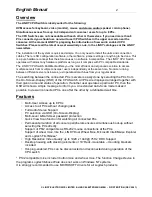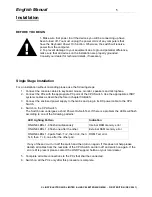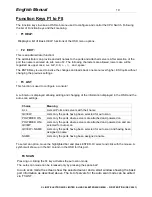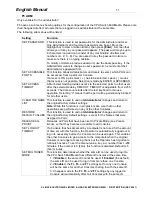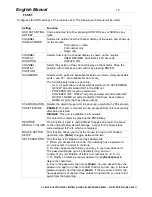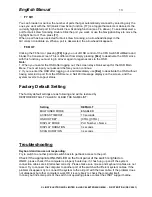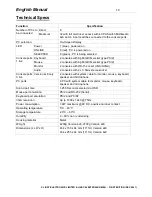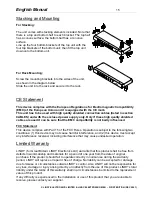
English
Manual
9
© LINDY ELECTRONICS LIMITED & LINDY-ELEKTRONIK GMBH - FIRST EDITION (DEC 2001)
OSD Functions
Navigation via OSD Menu
w
[ESC] goes up one level higher in the OSD. When already in highest level the OSD will be closed.
w
Use cursor Up/Cursor Down keys to move the highlighted bar. To make selections then press
ENTER.
w
Or click with the mouse at the triangle symbols (
▲▼
) or move the highlighted mouse cursor and
click the options to be selected.
w
After having made a selection the OSD automatically will go one level up or quit the OSD when
already in highest level.
ATTENTION:
(1)
If a port or server was switched to PRIVATE MODE by a user, the screen will stay dark when
another user selects this port. The OSD will display a message ‘Port is in private mode’.
(2)
If a port or server is already being used and operated by another user the server screen will
appear and the OSD displays the message ‘Port is in use’. Input to this server or port is possible
until the first user is disconnected (see F5 ADM / Set Access Timeout). Also if cascaded no input
to this port is possible AND the screen stays dark.
OSD Display window of selected port / server
The OSD can show the selected port / server permanently in a small window including the access status.
These settings can be adjusted via OSD Menu F6 CHANNEL DISPLAY DURATION and CHANNEL
DISPLAY POSITION.
Status information:
- S in front of the port number marks that this port is regularly accessed.
- S and R in front of the port number marks that this port can be displayed only, for instance because
another user is using the attached server. Input to this port is not possible as long as SR is displayed.
- Z
Zz
in front of the port number marks that this port will be free for access by other users after the
adjustable ‘ACCESS TIMEOUT’ time (2-255 sec., F5 SET ACCESS TIMEOUT) has passed.
- P in front of the port number indicates that this port is set to Private Mode by another user. The
monitor shows the OSD message ‘PORT IN PRIVATE MODE’ only.
Port Numbering
The port-ID is a one or two digit number. All servers connected directly to the CPU Switch MultiMedia
have a one digit port-ID (1 to 8).



